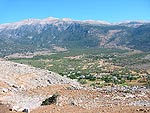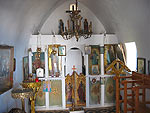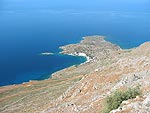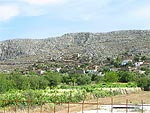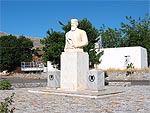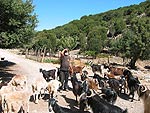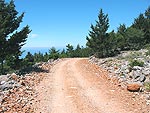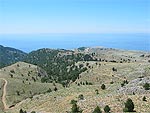| Anopoli is situated on a plateau 12 km west of Sfakia at a height of 600 m. In reality the village consists of quite a few built-up areas: Kambos, Gyros, Ases, Rizes, Kambia, Mariana, Skala, Pavliana, Limnia, Agios Dimitrios and Vardiana. | ||||
|
|
||||
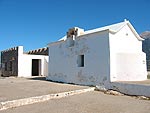 |
There was a relatively big town in this place even in Antiquity. A few ruins are visible at the Agia Aikaterini church on the hill south of the village. | |||
| The
Agia Aikaterini church
|
||||
| Relations between Anopoli and
Loutro were always close, as the latter since Antiquity has acted as the
sea port of Anopoli whose inhabitants were earlier enterprising sailors.
|
||||
| In the Acts of the Apostles (27, 12), Loutro is mentioned under the name of Phoenix. In former times Loutro was called Katopoli in contrast to Anopoli (kato = down, ano = up). | ||||
|
View
over Loutro
|
||||
| During the Venetian Period and the first years of the Turkish
Period many of the inhabitants were still wealthy from the incomes
brought in by their ships.
|
||||
| In his travel book
"Travels in Crete" from 1837, Robert Pashley writes that there were more than 2.000 olive trees on
the plateau, until Hussein
Pasha and his army of several thousand men came to Anopoli to defeat the
rebels. After only 19 days all the tress were cut down, probably in
order to deprive the Anopolits of their livelihood.
|
||||
| Furthermore, Pashley writes that there were mulberry trees which were used for the silk production. | ||||
|
|
||||
| Anopoli was destroyed several
times by both Venetians and Turks:
|
||||
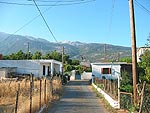 |
After having suppressed the Kallergis family's revolt in 1365 the Venetians destroyed the village, and the inhabitants had to take flight to other areas in Crete. They did, however, return later and rebuilt the village, so that it by the beginning of the Turkish Period again appeared as a thriving town. | |||
| One of the best known freedom fighters, Daskalogiannis, comes from Anopoli, and after his unsuccessful revolt against the Turks in 1770 the village was burnt down as a punishment. | ||||
| After Omer Pasha's destruction
of the village during the 1866-revolt it has never again managed to
re-establish its former greatness.
|
||||
 |
Today there is a little agriculture, but the chief employment is the animals. | |||
|
The nature of the area is ideal for the large flocks of sheep and goats grazing in the mountains during the summer. |
||||
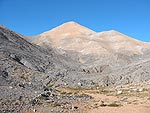 |
The area has only a little tourism in the form of wanderers who stay in the village overnight after the hardships of a day in the mountains. | |||
| Pachnes (2.453 m) | ||||
|
Even a somewhat difficult and stony bicycle track has been establish from Anopoli to the ghost village of Mouri, |
||||
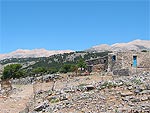 |
where just one shepherd lives in the summer. | |||
|
|
||||
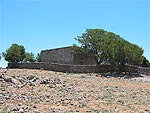 |
All of a sudden the road ends immediately after the Agios Georgios church - | |||
|
|
||||
| at one of the numerous gorges that cut through the area. | ||||
